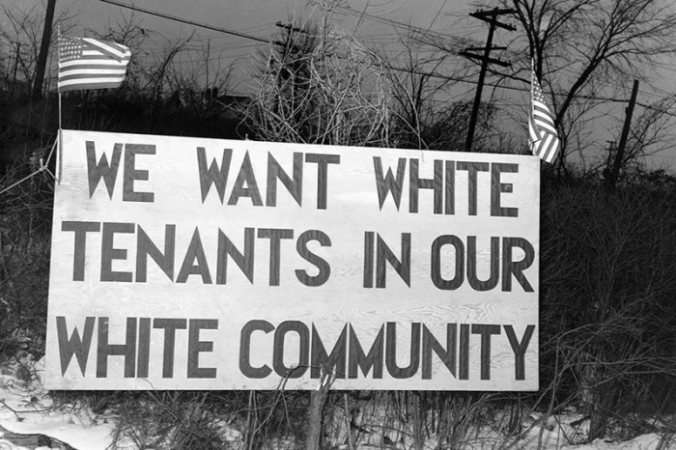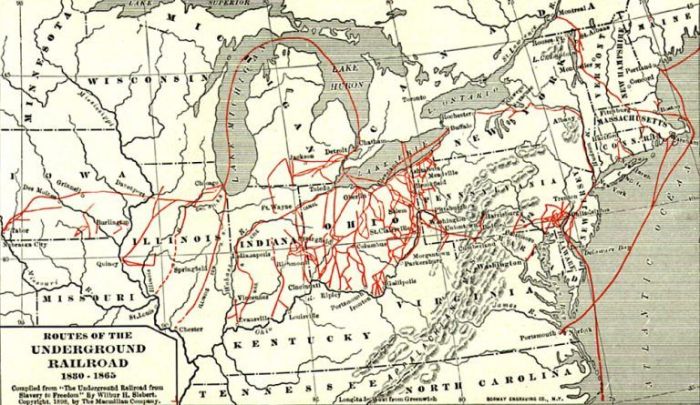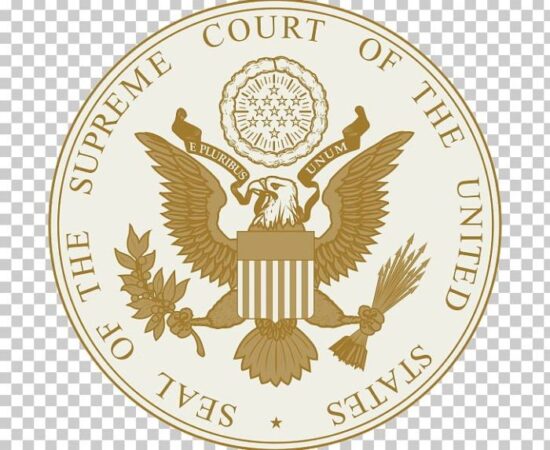
What are the Jim Crow laws? These laws, enacted in the American South following the Civil War, were a system of segregation and disenfranchisement designed to suppress the rights of Black Americans. The Jim Crow era, named after a minstrel show character, marked a period of deep racial injustice and oppression, with far-reaching consequences that continue to resonate in modern society.
The Jim Crow laws were a direct response to the Reconstruction Era, a period of hope and promise for Black Americans following the Civil War. However, as the federal government withdrew its troops from the South, white Southerners began enacting laws to restrict Black people’s freedoms and maintain white supremacy. These laws covered every aspect of life, from voting rights to education, public accommodations, and even access to healthcare.
Economic and Social Impacts of Jim Crow Laws
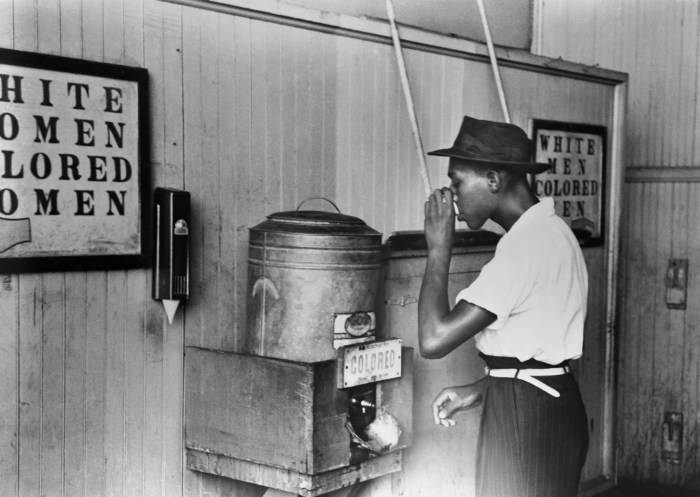
The Jim Crow laws, a system of racial segregation and disenfranchisement that existed in the American South from the late 19th century to the mid-20th century, had profound and lasting economic and social impacts on African Americans. These laws, designed to maintain white supremacy, created a system of legal and social barriers that severely limited opportunities for Black Americans, leading to widespread poverty, inequality, and social injustice.
Economic Consequences for African Americans
The economic consequences of Jim Crow laws were devastating for African Americans. They were systematically denied access to economic opportunities, including land ownership, decent employment, and fair wages.
- Land Ownership: Jim Crow laws restricted African Americans from owning land, preventing them from building wealth and achieving economic independence.
- Sharecropping: The system of sharecropping, often forced upon African Americans, trapped them in a cycle of debt and poverty. Landowners often exploited sharecroppers, paying them low wages and charging high interest rates, leaving them with little or no income.
- Employment Discrimination: Jim Crow laws led to widespread employment discrimination, relegating African Americans to low-paying, unskilled jobs, such as agricultural labor, domestic service, and menial tasks. They were often denied access to skilled trades and professional occupations, hindering their economic advancement.
Impact of Segregation on Education, Healthcare, and Employment Opportunities
Jim Crow laws mandated segregation in all aspects of public life, including education, healthcare, and employment. These policies had a profound impact on the lives of African Americans, denying them access to quality services and opportunities.
- Education: Segregated schools for African Americans were often underfunded, lacked resources, and had poorly trained teachers. This resulted in inferior education, limiting their opportunities for advancement in a society that valued education.
- Healthcare: African Americans faced significant barriers to healthcare access, including limited access to hospitals, clinics, and qualified medical professionals. This led to higher rates of illness, disability, and premature death among Black communities.
- Employment: Segregation in the workplace limited African Americans to low-paying, unskilled jobs, denying them access to skilled trades, professional occupations, and opportunities for advancement.
Role of Jim Crow Laws in Perpetuating Racial Inequality and Poverty
Jim Crow laws played a crucial role in perpetuating racial inequality and poverty in the South. By creating a system of legal and social barriers, these laws denied African Americans the opportunity to achieve economic security and social mobility.
- Economic Disparity: Jim Crow laws resulted in a significant economic disparity between white and Black communities. The systematic disenfranchisement and discrimination experienced by African Americans under Jim Crow limited their access to wealth, education, and employment opportunities, leading to a widening gap in income and wealth between the two races.
- Intergenerational Poverty: The economic consequences of Jim Crow laws had a lasting impact on generations of African Americans. The lack of access to education, healthcare, and economic opportunities created a cycle of poverty that was difficult to break.
- Social Inequality: Jim Crow laws not only created economic inequality but also perpetuated social inequality. The segregation and discrimination embedded in these laws reinforced negative stereotypes about African Americans, limiting their social mobility and access to opportunities.
Economic Disparity between White and Black Communities in the Jim Crow South
The following table illustrates the economic disparity between white and Black communities in the Jim Crow South:
| Indicator | White | Black |
|---|---|---|
| Median Income | $2,500 | $500 |
| Homeownership Rate | 70% | 20% |
| Literacy Rate | 90% | 30% |
| Unemployment Rate | 5% | 25% |
Resistance to Jim Crow Laws
Despite the pervasive nature of Jim Crow laws, resistance to them was widespread and multifaceted. Black communities, along with allies, employed a range of strategies to challenge segregation and discrimination. These acts of defiance, though often met with brutal suppression, played a vital role in paving the way for the Civil Rights Movement and ultimately, the dismantling of Jim Crow.
Forms of Resistance
The fight against Jim Crow took various forms, from everyday acts of defiance to organized campaigns and legal battles.
- Boycotts and Protests: Black communities often organized boycotts of businesses that practiced segregation, demonstrating their economic power and refusal to tolerate discrimination. For instance, the Montgomery Bus Boycott of 1955, led by Rosa Parks and Martin Luther King Jr., lasted over a year and resulted in the desegregation of public transportation in Montgomery, Alabama.
- Voting Rights Activism: Despite facing intimidation and violence at the polls, Black citizens persistently fought for their right to vote. Groups like the NAACP (National Association for the Advancement of Colored People) worked tirelessly to challenge discriminatory voting laws and register Black voters. The Selma to Montgomery voting rights marches of 1965, led by Dr. King, brought national attention to the issue of voting rights and paved the way for the passage of the Voting Rights Act of 1965.
- Legal Challenges: The NAACP played a pivotal role in challenging Jim Crow laws in court. The organization’s legal team, led by Thurgood Marshall, meticulously built cases that challenged the constitutionality of segregation, culminating in landmark Supreme Court decisions like *Brown v. Board of Education* (1954) which declared racial segregation in public schools unconstitutional.
- Self-Help Organizations: Black communities established self-help organizations to provide support and resources, bypassing discriminatory systems. These organizations offered education, healthcare, and economic opportunities, creating spaces of empowerment and resilience in the face of Jim Crow. For example, the National Urban League, founded in 1911, worked to improve the social and economic conditions of Black Americans.
- Cultural Resistance: Black artists, musicians, writers, and intellectuals used their creative talents to challenge Jim Crow’s oppressive ideology. The Harlem Renaissance, a flourishing of Black arts and culture in the 1920s, provided a platform for Black voices to express their experiences and challenge racist stereotypes. Music, particularly blues and jazz, served as a powerful form of resistance, conveying themes of struggle, resilience, and hope.
The Legacy of Jim Crow Laws: What Are The Jim Crow Laws

The Jim Crow era, a period of racial segregation and disenfranchisement in the American South lasting from the late 19th century to the mid-20th century, left a lasting and profound impact on American society. Though the Jim Crow laws were officially dismantled by the Civil Rights Movement, their legacy continues to shape the social, economic, and political landscape of the United States.
The Enduring Impact of Jim Crow Laws
The Jim Crow laws, a set of state and local laws enacted in the Southern and some border states of the United States between 1877 and the mid-1960s, were designed to disenfranchise and segregate African Americans. These laws created a system of racial apartheid that denied Black Americans basic rights and opportunities, including the right to vote, access to education, and equal employment opportunities. The impact of these laws continues to be felt today, manifesting in various forms of racial inequality and systemic racism.
Ongoing Challenges of Racial Inequality and Systemic Racism
The legacy of Jim Crow laws has contributed to a range of persistent social and economic disparities between Black Americans and other racial groups. These disparities are evident in areas such as:
- Wealth Gap: The racial wealth gap, the difference in wealth between Black Americans and White Americans, is a direct consequence of Jim Crow laws and their lasting impact on economic opportunities. The inability of Black Americans to accumulate wealth due to discriminatory practices in housing, education, and employment has led to a significant wealth disparity.
- Education: The legacy of Jim Crow laws continues to affect educational opportunities for Black Americans. Segregated schools, underfunded facilities, and disparities in access to quality education have contributed to a persistent achievement gap between Black and White students.
- Criminal Justice System: The legacy of Jim Crow laws is evident in the disproportionate incarceration rates of Black Americans. The War on Drugs, mass incarceration, and implicit bias in law enforcement have contributed to a system that disproportionately targets Black Americans.
- Healthcare: Disparities in healthcare access and quality for Black Americans can be traced back to the legacy of Jim Crow laws. Historical and ongoing discrimination in healthcare has resulted in poorer health outcomes for Black Americans.
Examples of the Legacy of Jim Crow Laws in Contemporary Issues, What are the jim crow laws
The legacy of Jim Crow laws is not confined to the past; it continues to influence contemporary issues and challenges:
- Voter Suppression: The history of voter suppression tactics used against Black Americans during the Jim Crow era has continued in more subtle forms, such as voter ID laws, gerrymandering, and limited early voting. These tactics have been used to disenfranchise Black voters and limit their political participation.
- Mass Incarceration: The legacy of Jim Crow laws is evident in the disproportionate incarceration rates of Black Americans. The War on Drugs, mass incarceration, and implicit bias in law enforcement have contributed to a system that disproportionately targets Black Americans.
- Police Brutality: The history of racialized policing, rooted in the Jim Crow era, continues to manifest in police brutality and racial profiling. The disproportionate use of force against Black Americans highlights the enduring impact of systemic racism on law enforcement.
- Housing Discrimination: The legacy of redlining and other discriminatory housing practices from the Jim Crow era continues to shape housing patterns and segregation in many American cities. These practices have limited access to affordable housing and wealth accumulation for Black Americans.
Timeline of Key Events Related to Jim Crow Laws and their Impact
| Year | Event | Impact |
|---|---|---|
| 1877 | Reconstruction ends, marking the beginning of the Jim Crow era. | Southern states begin enacting laws to disenfranchise and segregate Black Americans. |
| 1896 | The Supreme Court rules in Plessy v. Ferguson that “separate but equal” facilities for Black and White Americans are constitutional. | This ruling legitimizes segregation and provides legal justification for discriminatory practices. |
| 1954 | The Supreme Court rules in Brown v. Board of Education that racial segregation in public schools is unconstitutional. | This landmark decision begins the process of dismantling segregation, but it is met with resistance in the South. |
| 1964 | The Civil Rights Act is passed, outlawing discrimination based on race, color, religion, sex, or national origin. | This act dismantles legal segregation and begins to address systemic racism. |
| 1965 | The Voting Rights Act is passed, guaranteeing the right to vote to all citizens regardless of race. | This act removes barriers to voting for Black Americans, but ongoing efforts to suppress voting rights continue. |
Conclusive Thoughts
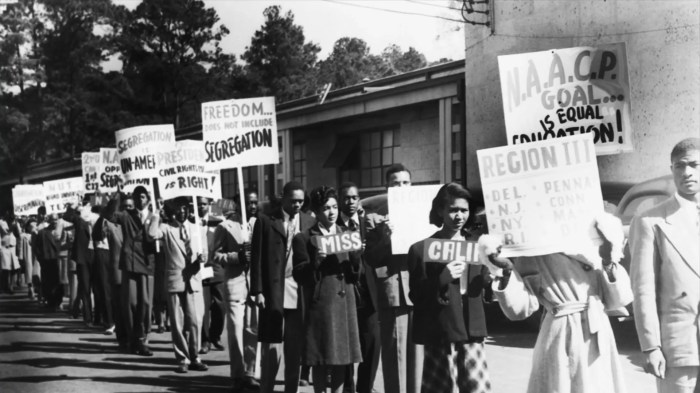
The legacy of Jim Crow laws continues to shape the United States today. While these laws were formally abolished in the mid-20th century, their impact on racial inequality and systemic racism persists. Understanding the history of Jim Crow is crucial to addressing the challenges of racial injustice in the present and working towards a more equitable future for all Americans.
Common Queries
What was the purpose of Jim Crow laws?
The primary purpose of Jim Crow laws was to disenfranchise and segregate Black Americans, ensuring white supremacy and maintaining social and economic control in the South.
How long did Jim Crow laws last?
Jim Crow laws were implemented from the late 19th century until the mid-20th century, gradually being dismantled by the Civil Rights Movement and landmark Supreme Court decisions.
What were some of the key provisions of Jim Crow laws?
Key provisions included literacy tests, poll taxes, grandfather clauses to disenfranchise Black voters, “separate but equal” doctrine for public facilities, and segregation in housing, education, and employment.
What were some examples of resistance to Jim Crow laws?
Examples include the Montgomery Bus Boycott, the Freedom Rides, the sit-ins, and the March on Washington for Jobs and Freedom, all organized by the Civil Rights Movement.
How did Jim Crow laws affect the economy?
Jim Crow laws contributed to economic disparity between Black and white communities in the South, limiting opportunities for Black Americans in education, employment, and wealth accumulation.

